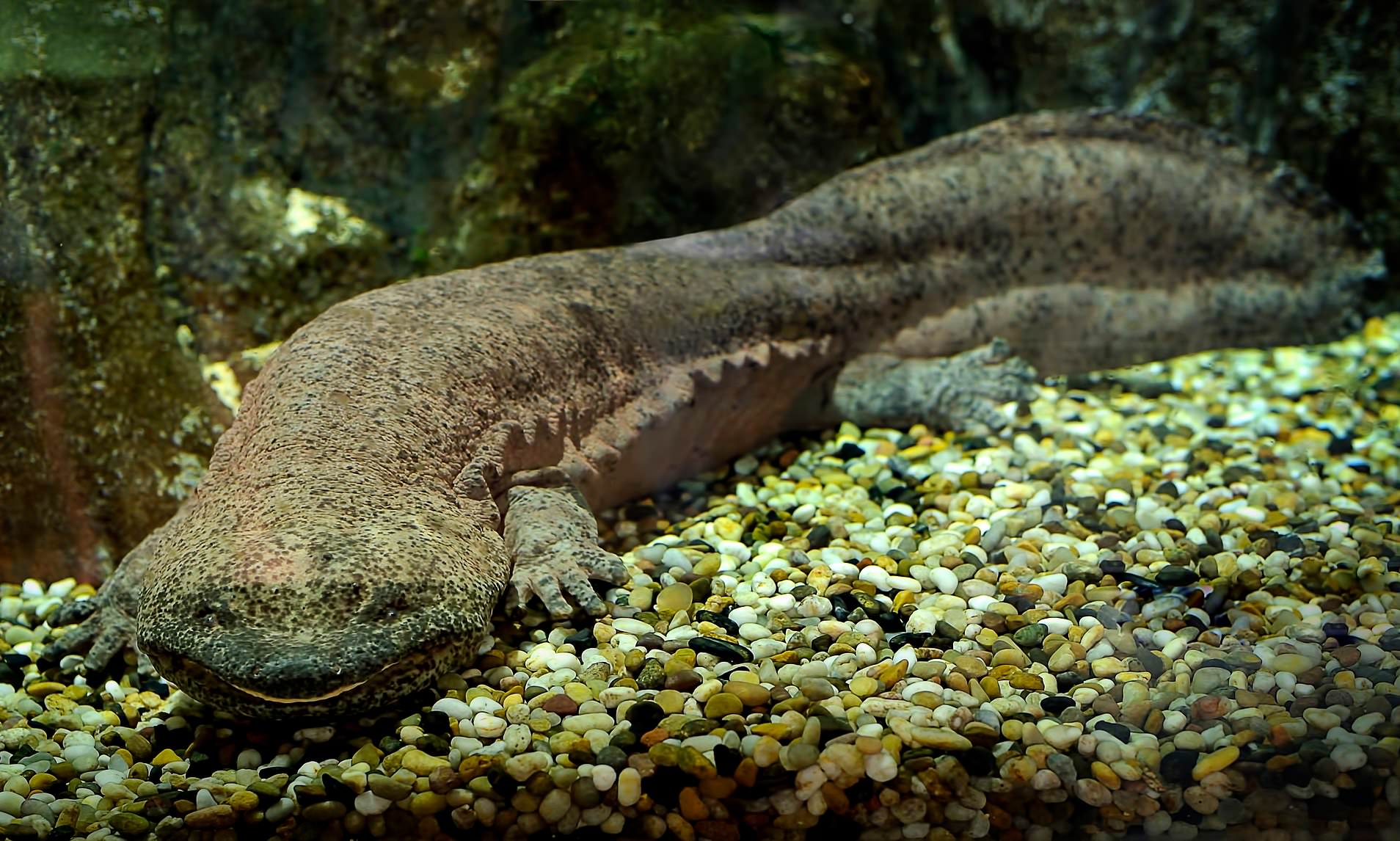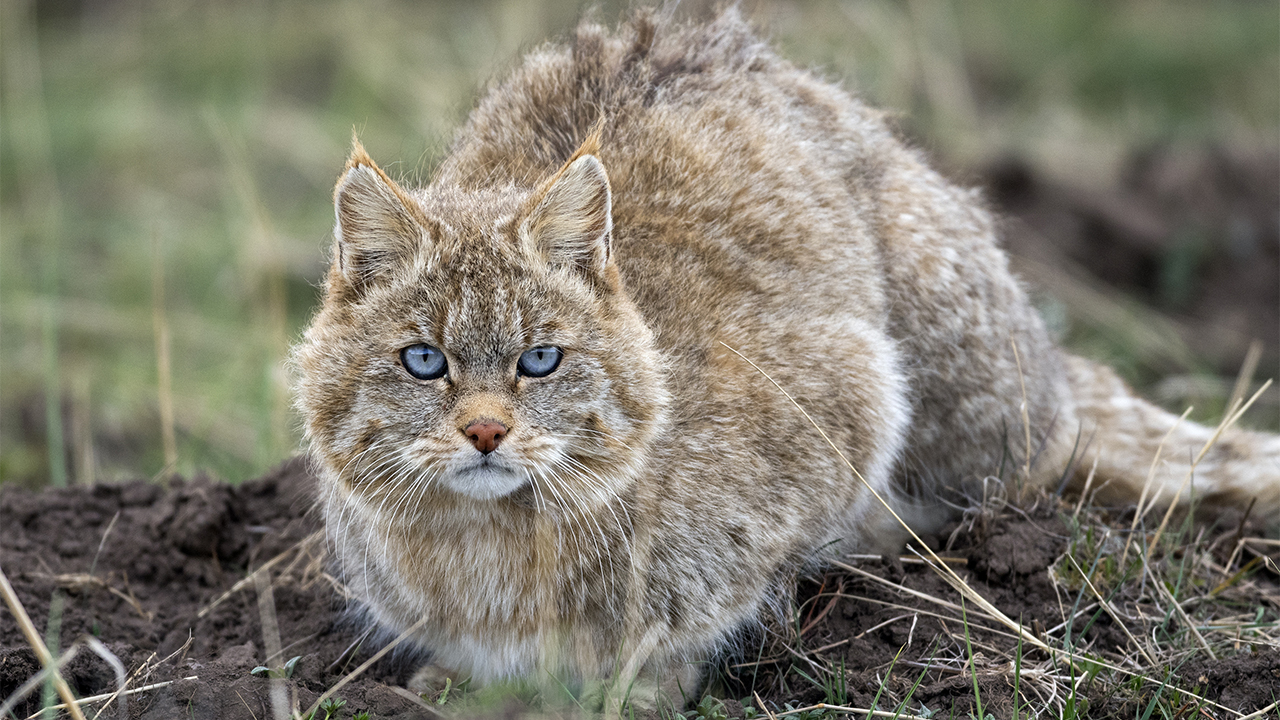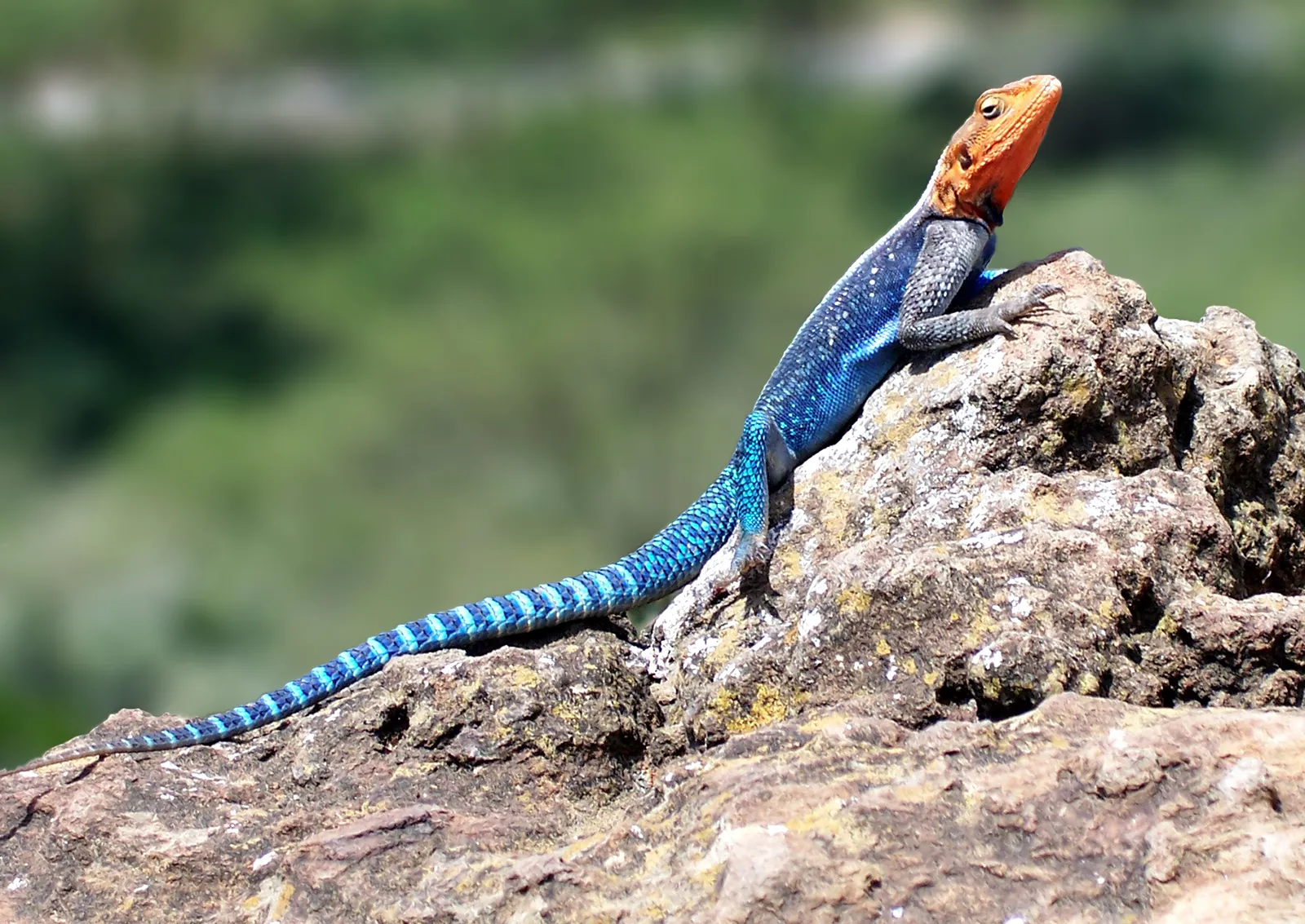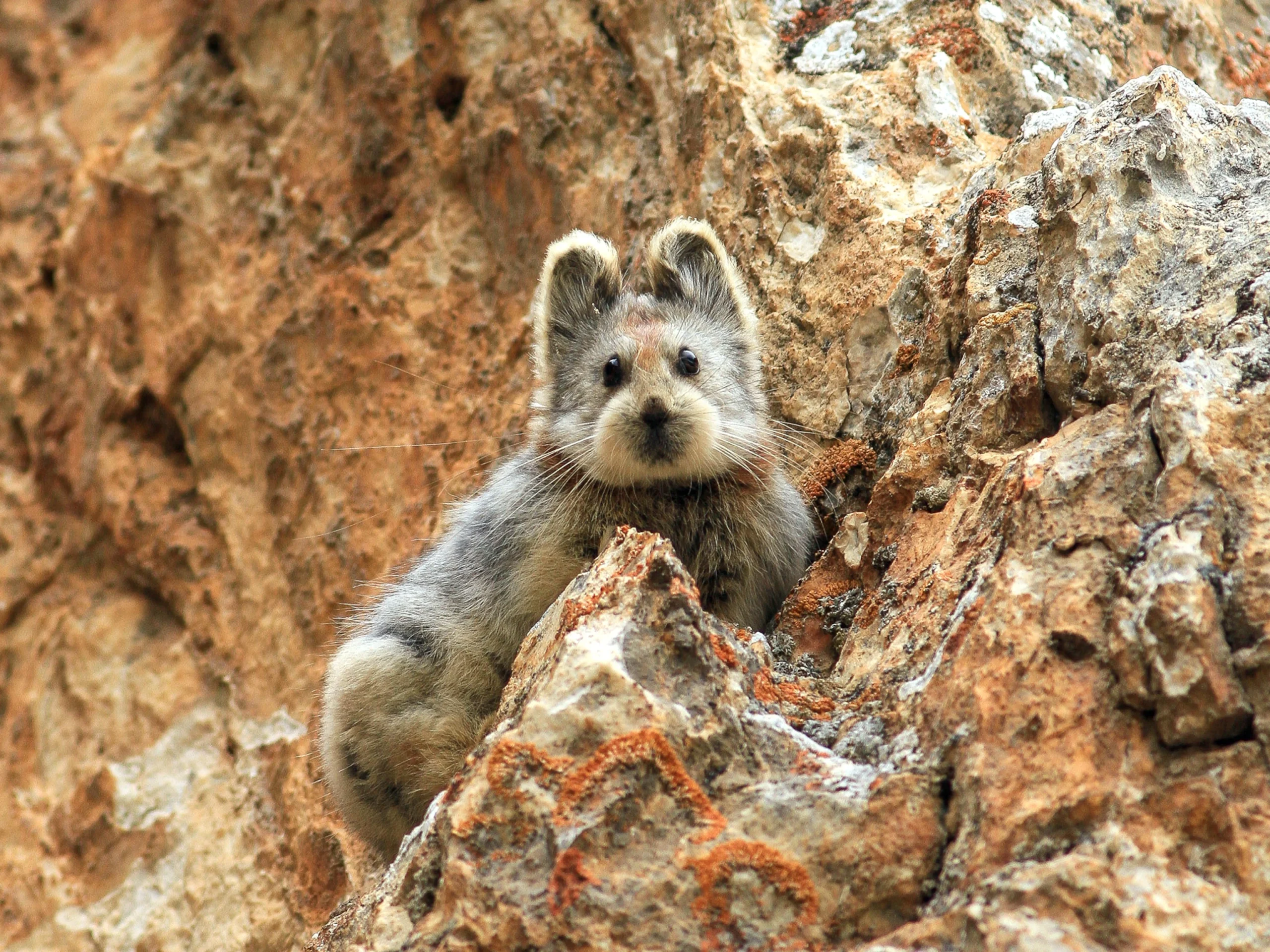1. Giant Panda (Ailuropoda melanoleuca)

Image Source: Axios
Undoubtedly, the Giant Panda is among the most iconic animals that hail from China. These magnificent creatures primarily roam the forests in Sichuan, but their habitat stretches to neighboring provinces as well. With their distinctive black and white markings and a penchant for bamboo, they have become symbols of wildlife conservation worldwide. Their cuddly appearance has endeared them to many, making them not just an ambassador for China's wildlife, but for global conservation efforts too.Original content sourced from Quizzable.com
2. Red Panda (Ailurus fulgens)

Image Source: Geographical
While they share the name 'panda', the Red Panda is an entirely different species than its giant counterpart. More akin to raccoons in terms of size and appearance, these creatures captivate with their russet fur and playful demeanor. Unlike the bamboo-loving Giant Pandas, Red Pandas have a diverse diet that includes fruits, acorns, and insects. These endearing animals can typically be found nestled among the trees in the eastern Himalayas.
3. Chinese Salamander (Andrias davidianus)

Image Source: Daily Mail
The Chinese Salamander, or the Chinese Giant Salamander, is nothing short of a marvel in the amphibian world. Holding the title as one of the largest amphibians globally, they can stretch to lengths exceeding 1.8 meters. These salamanders are not just remarkable for their size but are also critically endangered, making them an urgent focus for conservationists. Their natural habitats are freshwater lakes and streams spread across China.
4. Golden Snub-nosed Monkey (Rhinopithecus roxellana)

Image Source: The Sun
The mountainous forests of central and Southwest China are home to the mesmerizing Golden Snub-nosed Monkey. These primates are easily recognizable by their bright golden fur and distinctive blue faces, a stark contrast to the verdant forests they inhabit. Living in large, complex social groups, these monkeys exhibit a myriad of vocal and non-vocal communications, making them a fascinating subject for primatologists and wildlife
5. Tibetan Antelope (Pantholops hodgsonii)

Image Source: Tibet Vista
Roaming the vast expanse of the Tibetan plateau, the Tibetan Antelope, or Chiru, is a majestic sight against the backdrop of towering Himalayan peaks. These antelopes are adapted to high altitudes, and their fine wool, known as 'shahtoosh', is highly sought after, sadly leading to significant poaching. Due to this, their numbers have dwindled over the years, making conservation initiatives essential to their survival.
6. Père David's Deer (Elaphurus davidianus)

Image Source: Wikipedia
Père David's Deer, a fascinating species, once roamed freely in the river valleys of China. However, modern times saw them becoming extinct in their natural habitats. Their tale is one of resilience, as a few members of the species were saved and bred in captivity. With growing awareness and concerted conservation efforts, there have been initiatives to reintroduce them back to the wild, reviving hopes of their majestic presence gracing China's landscapes once again.
7. Chinese Alligator (Alligator sinensis)

Image Source: Peoria Zoo
The Yangtze River basin, a vital waterway of China, harbors the critically endangered Chinese Alligator. Unlike its American counterpart, this species is relatively smaller but faces significant threats, primarily from habitat loss and human activities. Their fascinating life cycle, which includes a period of winter dormancy, is a unique adaptation to their environment. Conservationists are working diligently to ensure these reptiles don't vanish into oblivion.
8. Crested Ibis (Nipponia nippon)

Image Source: eBird
The Crested Ibis, with its brilliant plumage and striking appearance, once graced the skies across China, Russia, and Japan. Regrettably, a combination of habitat loss and hunting has restricted its range, confining it mainly to certain regions in China. Thanks to sustained efforts, there's been a resurgence in their numbers. Still, the Crested Ibis remains a poignant reminder of nature's fragility in the face of human encroachment.
9. Chinese Pangolin (Manis pentadactyla)

Image Source: Wikipedia
The Chinese Pangolin, an enigmatic, scaly mammal, has long been a victim of relentless poaching, primarily for its unique scales. Believed to possess medicinal properties in traditional practices, these scales have led to the species becoming critically endangered. Their nocturnal and elusive nature makes them a challenge to study, but efforts are underway globally to protect them from the threats of illegal wildlife trade.
10. Chinese Mountain Cat (Felis bieti)

Image Source: Science
Set against the backdrop of the vast Tibetan plateau, the Chinese Mountain Cat is a feline wonder native to this region. With a sturdy build and dense fur adapted to high-altitude cold, these cats are a testament to nature's incredible ability to specialize and adapt. Often elusive and solitary, they tread the rugged terrains with a quiet grace, playing a vital role in the ecological balance of the plateau.
11. Golden Takin (Budorcas taxicolor bedfordi)

Image Source: Tierpark Berlin
A captivating blend of goat and antelope features, the Golden Takin is a subspecies of takin that graces the mountainous terrains of Sichuan and Gansu provinces. With its thick, golden-hued fur, it is perfectly adapted to the often harsh and cold climatic conditions of its native regions. Revered in local culture and mythology, this majestic creature stands as a symbol of the rich biodiversity endemic to China.
12. White-lipped Deer (Przewalskium albirostris)

Image Source: Wikipedia
Roaming the expansive Tibetan plateau is the White-lipped Deer, aptly named for its distinguishing white muzzle. This high-altitude dweller has evolved over millennia to thrive amidst the barren landscapes and thin air. With its robust build and dense fur, it showcases nature's prowess in equipping species with survival traits tailored for their environment.
13. Black-necked Crane (Grus nigricollis)

Image Source: eBird
A sight to behold against the vast expanses of the Tibetan plateau, the Black-necked Crane stands out with its contrasting black neck and primarily grey body. Revered in local culture and often depicted in art and folklore, this bird is more than just a species; it's a living testament to the symbiotic relationship between the land and its inhabitants. Its graceful dance during mating season is a spectacle cherished by locals and tourists alike.
14. Yunnan Box Turtle (Cuora yunnanensis)

Image Source: Turtle Conservancy
Deep within the lush landscapes of Yunnan province resides the Yunnan Box Turtle, a species teetering on the brink of extinction. This critically endangered turtle, with its distinctive shell patterns and gentle demeanor, faces numerous threats, mainly habitat destruction and illegal pet trade. Efforts are ramping up to conserve this unique species, shining a light on the fragile balance of life in biodiverse hotspots.
15. Hainan Black-crested Gibbon (Nomascus hainanus)

Image Source: BioGraphic
Hainan Island is home to one of the world's most endangered primates: the Hainan Black-crested Gibbon. With its distinctive vocalizations echoing through the island's forests, this gibbon is a poignant symbol of the critical state of many of the world's primates. Rapid deforestation and human encroachment have dwindled their numbers alarmingly, making every effort to conserve them a race against time.
16. Forest Musk Deer (Moschus berezovskii)

Image Source: Britannica
Delicately navigating the mountainous terrains of southwest China, the Forest Musk Deer stands out with its petite stature and secretive nature. Beyond its captivating physical features, it is renowned for the musk it produces, which, unfortunately, has made it a target for poachers. Deep within the forests, these elusive creatures play a crucial role in maintaining ecological balance, serving as a testament to the diverse and vibrant wildlife of China.
17. Tibetan Sand Fox (Vulpes ferrilata)

Image Source: SAFE Worldwide
With a gaze that seems to pierce through the vast expanses of the Tibetan plateau, the Tibetan Sand Fox thrives in this challenging environment. Its unique, square-like facial features and dense fur make it well-suited for the cold desert climate. As an integral part of the plateau's ecosystem, this fox's behaviors and hunting techniques reveal nature's intricate dance of predator and prey in high-altitude regions.
18. Chinese White Dolphin (Sousa chinensis)

Image Source: South China Morning Post
Gracing the waters off the coast of southern China is the Chinese White Dolphin, distinguished by its pale, pinkish hue. Their playful frolics and leaps create an aquatic ballet, making them a favorite among locals and tourists. Beyond their beauty, these dolphins serve as indicators of marine health, prompting efforts to ensure their habitats remain pristine and free from the perils of pollution and overfishing.
19. Tsingyuan Agama (Laudakia tsinghaiensis)

Image Source: Britannica
The rugged landscapes of Qinghai province harbor the Tsingyuan Agama, a remarkable lizard species. With a body designed to seamlessly blend into rocky terrains and a behavior adapted to the province's unique climate, this lizard is a splendid example of nature's evolutionary mastery. Every sunbath and foraging expedition of this creature paints a picture of survival and adaptation.
20. Brown Eared-Pheasant (Crossoptilon mantchuricum)

Image Source: eBird
Echoing their unique calls through the mountainous areas of northern China, the Brown Eared-Pheasant is a visual and auditory treat. With their rich, brown plumage juxtaposed against stark white tails, these birds are a symbol of the avian diversity that China boasts. Their behaviors, nesting patterns, and calls offer a window into the complex world of bird ecology in the region's highlands.
21. Guizhou Snub-nosed Monkey (Rhinopithecus brelichi)

Image Source: GTCN
Amidst the lush landscapes of Guizhou province, one might glimpse the unique Guizhou Snub-nosed Monkey. With its distinct facial features and captivating presence, this primate showcases the rich biodiversity that China's southern territories house, reminding us of the ecological treasures hidden in lesser-known regions.
22. Tibetan Gazelle (Procapra picticaudata)

Image Source: iNaturalist Guatemala
The vast, rugged expanse of the Tibetan plateau provides a sanctuary for the Tibetan Gazelle. Graceful and agile, this gazelle's presence is a testament to nature's ability to flourish in even the most challenging terrains. Their movements, shadowed by the towering Himalayan peaks, encapsulate the wild spirit of Tibet's landscapes.
23. Chinese Zokor (Eospalax fontanierii)

Image Source: AZ Animals
Delving deep beneath the soils of northern China, the Chinese Zokor, a specialized burrowing rodent, carves out a niche existence. This industrious creature, expertly adapted to life underground, showcases the diversity of adaptations that rodents have evolved, enriching the tapestry of China's mammalian fauna.
24. Chinese Fire-bellied Newt (Cynops orientalis)

Image Source: The Spruce Pets
The tranquil ponds and marshlands of eastern China serve as the habitat for the vivid Chinese Fire-bellied Newt. With its vibrant underbelly signaling a warning to potential predators, this amphibian is both a beauty to behold and a symbol of the intricate web of life that freshwater habitats support.
25. Yangtze Finless Porpoise (Neophocaena asiaeorientalis asiaeorientalis)

Image Source: WWF
Gliding through the waters of the iconic Yangtze River is the Yangtze Finless Porpoise, a cetacean species facing the pressing challenges of endangerment. Its sleek, finless silhouette and intelligent demeanor highlight the river's ecological richness and underscore the urgent need for conservation initiatives in the region.
26. Chinese Pika (Ochotona huangensis)

Image Source: National Geographic
Chinese Pika (Ochotona huangensis) - Resembling the familiar forms of rabbits and hares, the Chinese Pika emerges as a petite marvel in the tapestry of China's fauna. While their size might be small, their presence in the ecosystem is significant, offering insights into the interconnected web of life they're a part
27. Yunnan Nase (Schizothorax grahami)

Image Source: Thumbnails Summary
The freshwaters of Yunnan province are graced by the Yunnan Nase, a fish species that thrives in these pristine waters. With each ripple they create, they remind us of the rich aquatic life that China's lakes and rivers shelter, and the importance of preserving these ecosystems for future generations.
28. Chinese Crocodile Lizard (Shinisaurus crocodilurus)

Image Source: Smithsonian's National Zoo
Venturing into the dense forests of southern China might reward one with a sighting of the Chinese Crocodile Lizard. Its name, inspired by its reptilian appearance, belies the wonder and diversity of the herpetological life found in this part of the world.
29. Tibetan Macaque (Macaca thibetana)

Image Source: iNaturalist
Towering amongst its kin, the Tibetan Macaque, one of the largest macaque species, calls the rugged mountain terrains of southwest China its home. Their communal behaviors and intriguing social structures stand as a testament to the intricate lives primates lead amidst the peaks and valleys.
30. Gooty Tarantula (Poecilotheria metallica)

Image Source: chrome.google.net
While its vibrant hues and striking patterns are often attributed to the landscapes of India, whispers of the Gooty Tarantula's presence have been heard from pockets within China. Every web they spin adds to the enigma surrounding their distribution and the mysteries of the arachnid world.





























